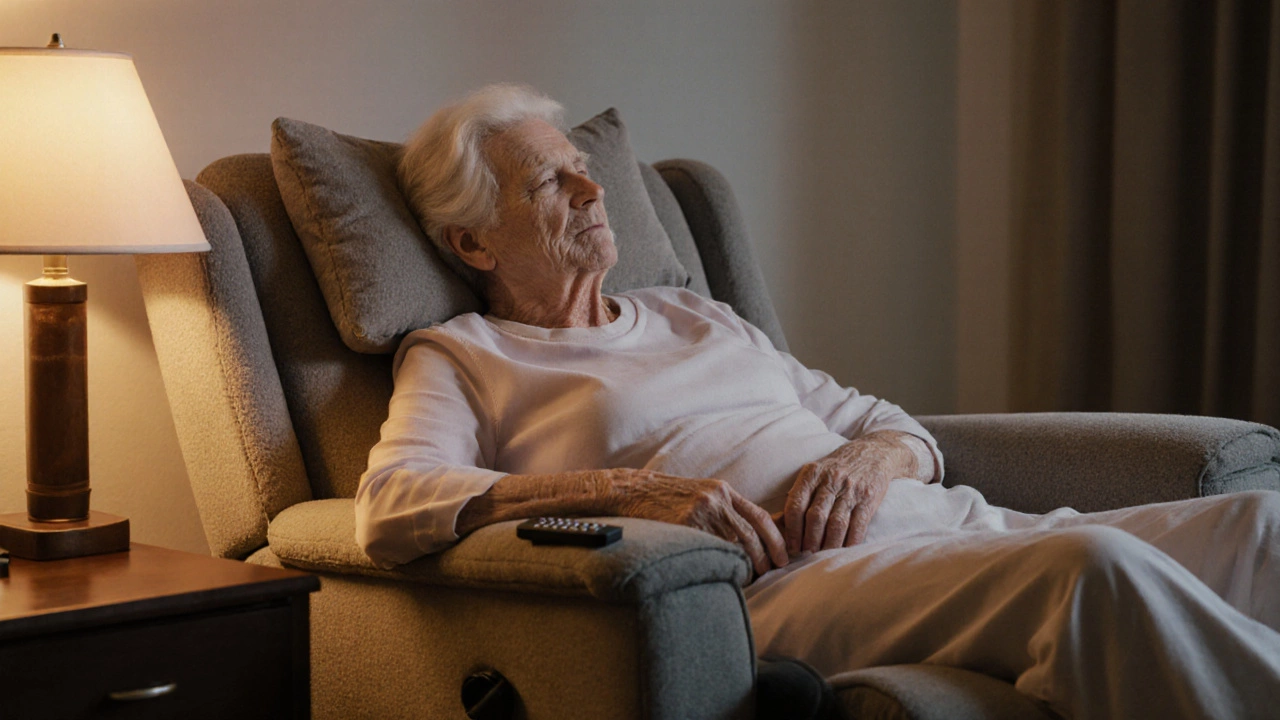Recliner Sleeping: Comfort, Health, and Best Picks for Nighttime Use
When you think of recliner sleeping, the practice of using a reclining chair as a primary sleep surface. Also known as sleeping in a recliner, it’s not just for naps or late-night TV anymore—many people rely on it for real, full-night rest, especially if they have back pain, sleep apnea, or acid reflux. It’s a quiet revolution in how we think about sleep, and it’s backed by real people—not just marketing.
Not all recliners are made for this. A sleep posture, the alignment of your spine and neck during rest matters more than you think. If your recliner doesn’t support your lower back or lets your head tilt too far forward, you’re not sleeping—you’re just resting on the edge of discomfort. Look for models with adjustable lumbar support, zero-gravity positioning, and enough depth to fully stretch your legs. These aren’t luxury features—they’re basic needs if you’re using it as your bed.
People with chronic conditions often turn to recliner sleeping because it works. A 2023 study from the Sleep Health Foundation found that over 30% of participants with GERD reported fewer nighttime heartburn episodes when sleeping in a slightly elevated recliner compared to a flat bed. Same goes for snorers and people with mild sleep apnea—elevating the upper body opens airways naturally. It’s not a cure, but it’s a practical fix that doesn’t need a machine or prescription.
Then there’s the comfort factor. A good recliner for sleeping isn’t just about angles—it’s about materials. Memory foam cushions that don’t flatten out, breathable fabrics that don’t trap heat, and sturdy frames that don’t creak or sag over time. You’re not buying a chair—you’re buying a sleep system. And if you’re doing this long-term, durability isn’t optional.
Some worry it’s bad for your spine. But that’s only true if you’re using the wrong one—or using it wrong. A recliner that lets you lie flat with your knees slightly bent? That’s actually closer to ideal than a rigid mattress for some bodies. It’s not about avoiding recliners. It’s about choosing the right one.
Below, you’ll find real advice from people who’ve lived this. From how to spot a recliner that’ll last five years versus one that collapses after six months, to which brands actually deliver on comfort claims, to simple tweaks that turn a regular recliner into a sleep-friendly setup. No fluff. No hype. Just what works.
Best Sleeping Positions for Seniors Using Recliner Chairs
Discover the best sleeping positions for seniors in recliner chairs, including ideal angles, what to avoid, and how to choose a supportive model. Learn why recliners help with acid reflux, breathing, and back pain.
More
